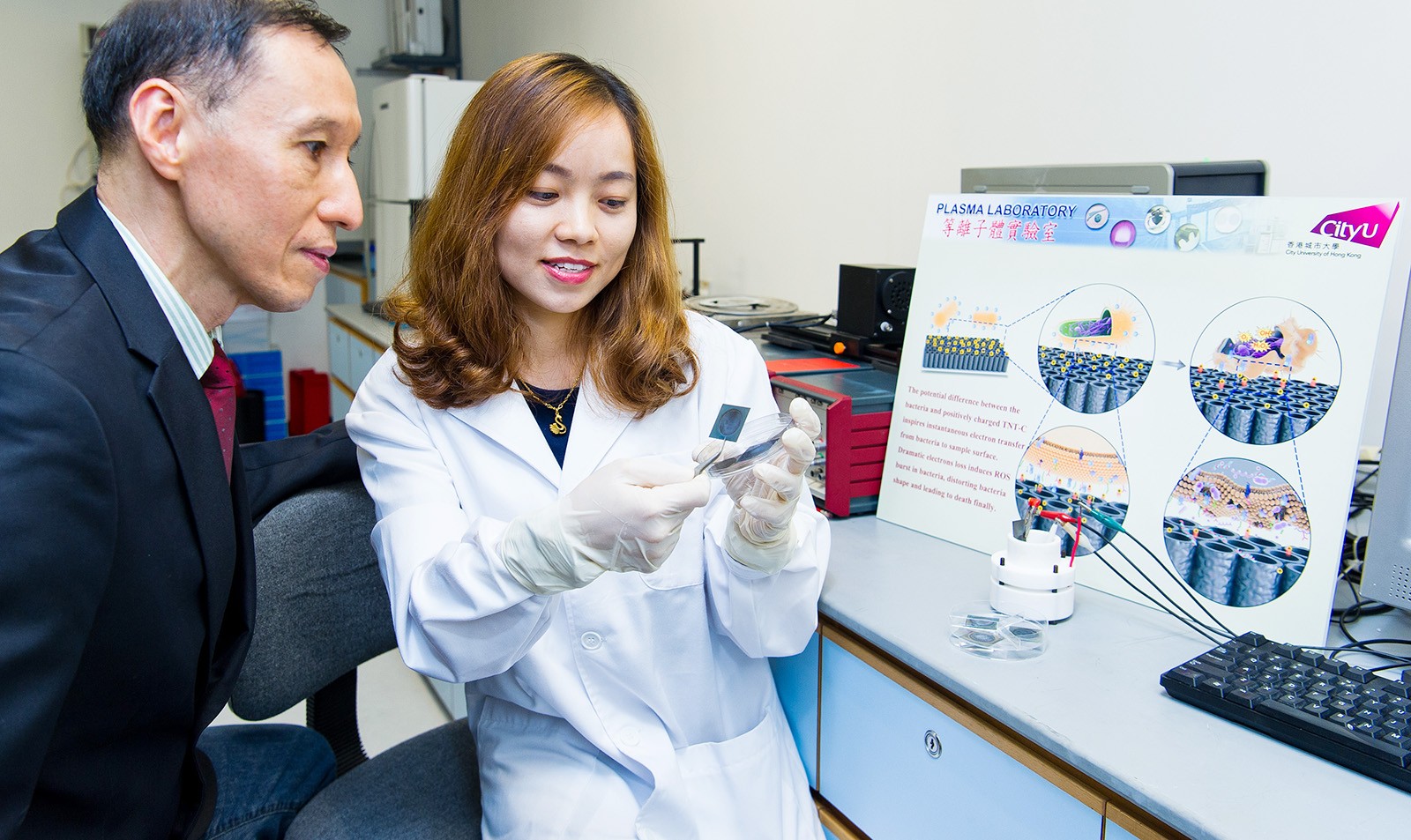CityU’s new technology prevents post-surgery bacterial infection
Emily Law
A research team led by Professor Paul Chu Kim-ho, a materials engineering expert at City University of Hong Kong (CityU), has developed a capacitive coating that kills bacteria when it is charged with electricity. When applied to orthopedic implants such as artificial joints and dental implants, the novel technology can reduce the risk of infection after surgery and help patients recover more quickly.
Professor Chu, Chair Professor in the Department of Physics and the Department of Materials Science and Engineering, and his research team discovered that TiO2 nanotubes doped with carbon (TNT-C) can kill bacteria continuously for a period of time after charging with a small electrical current. Their research has been published recently in the international journal Nature Communications.
The technology is based on previous innovations by Professor Chu and his team on killing bacteria in wounds using a high-voltage plasma jet. This new technology can be applied to materials implanted inside the human body.
In their experiments, the team tested bacteria such as Escherichia coli, Staphylococcus aureus, Pseudomonas aeruginosa and Staphylococcus epidermidis that can grow on implants after a patient undergoes surgery. Professor Chu said the TNT-C could kill bacteria after being charged for 15 minutes with a small direct current of less than 2 volts.
He explained that the positive electrode on the surface of the nanotube coating destroys the cell membranes of the bacteria without affecting normal cells. The capacitive coating kills over 90% of the above mentioned bacteria and the effect lasts for more than five hours after each charging cycle. The effectiveness of the treatment can be maintained for over several weeks if the coating is repeatedly charged.
By adding such a capacitive coating to orthopedic implants like artificial joints or dental implants together with a built-in micro charging device or through wireless charging, the new technology can protect patients from infection after surgery. Throughout the healing process, the technology does not produce any harmful side effects in patients and charging can stop after they have recovered.
“We are very excited about the research outcome,” Professor Chu said. “Currently, patients have to take medication such as antibiotics in the early post-surgery stage to prevent bacterial infection. However, problems such as drug resistance or other side effects may develop. This new technology of charging TNT-C does not have any side effects, and the coating can retain electrical charges to kill bacteria for an extended period of time. This groundbreaking technology can reduce complications arising from bacterial infection and improve the well-being of patients.”
Also, the new technology is demonstrated to have prevented the formation of biofilms that may otherwise cause resistance to medicines like antibiotics.
Professor Chu said the early results of the project, titled “An Antibacterial Platform Based on Capacitive Carbon-Doped TiO2 Nanotubes after Charging with Direct / Alternating Currents”, had been very encouraging. With clinical trials to follow, he hoped that the technology would be applied to medical treatment in the future.
